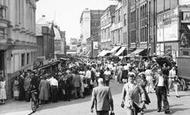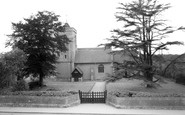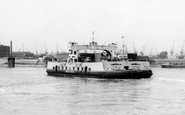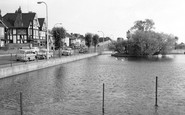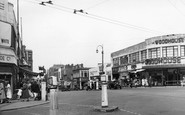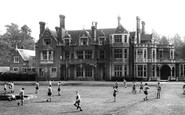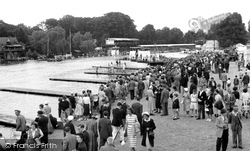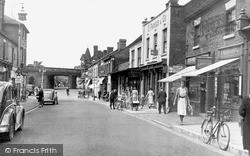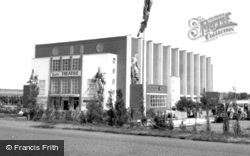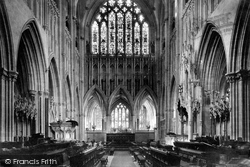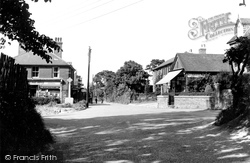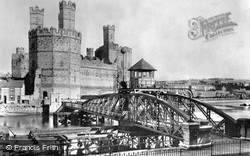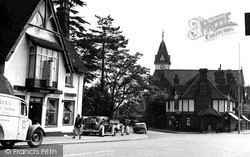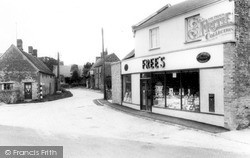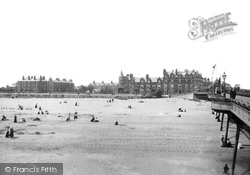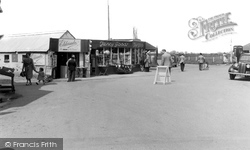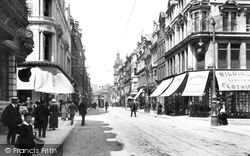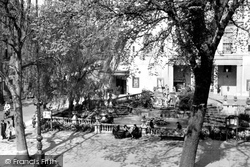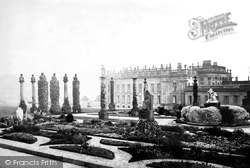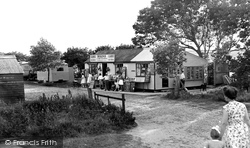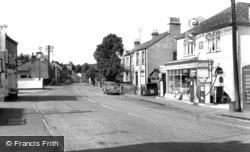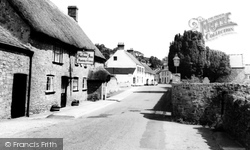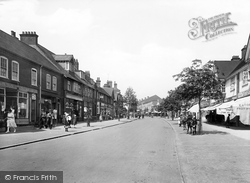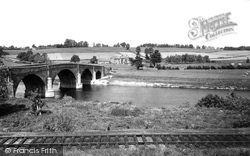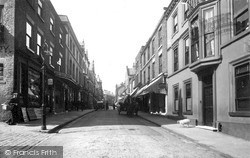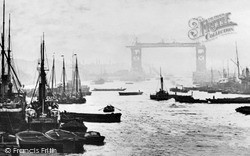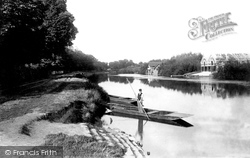Places
2 places found.
Those places high-lighted have photos. All locations may have maps, books and memories.
Photos
3 photos found. Showing results 221 to 3.
Maps
29 maps found.
Books
1 books found. Showing results 265 to 1.
Memories
1,365 memories found. Showing results 111 to 120.
Whitethorn Morris Dance With The Flowers Of May In Denham
Correct me if I am wrong but I think that this view shows the splendid canal side pub which I remember as "The Malt Shovel". One fine evening in May 2004 the dancers from two Harrow based ...Read more
A memory of Denham in 2004 by
Growing Up In A Small Village
My parents moved to Twycross from London in the early 1960s. We lived on Sheepy Road next door to Mr Charlie Brooks and Louie Jones. On the opposite side were Stan and Ilma Jones and Len Gibbs and his daughter Joan. I ...Read more
A memory of Twycross by
Cherished Memories
Finding this site has brought many wonderful memories back to me. I was born in St Mary's Hospital, Croydon. My maiden name was Chappell. I lived in Purley Road, South Croydon not far from the Red Deer until 1957. Every Saturday I ...Read more
A memory of Croydon in 1953 by
Memories Of Sneinton
Betty and I were brought up in Davidson Street, Sneinton just before the Second World War. It was a small back-to-back terraced house with an outside toilet. One of my first recollections was being bathed in the small kitchen ...Read more
A memory of Sneinton in 1930 by
Choir Boy/Organ Pumping
I remember being in the choir at the church during the time of my evacuation to Westbury Leigh sometime during the 1939-45 war. I also pumped the organ which was at that time quite hard work for a young lad (but I think ...Read more
A memory of Westbury Leigh in 1942 by
Evacuation
I was evacuated about 1943. I can remember a field, I think of cauliflowers, opposite, and a bluebell wood somewhere at the bottom of the road. The people next door were called Ackridge(I don't know if that's spelt right), they had twins ...Read more
A memory of Cudworth in 1943 by
Woolwich Ferry
There has been a ferry at Woolwich for many centuries but the people of Woolwich complained in the 1880s that West London had free access across the River Thames by bridges so why couldn't they have free travel? The river was too busy ...Read more
A memory of Woolwich by
Abc Minors,Trolley Buses, Lonesome School, Oakleigh Way
I have just found this page and what memories it rekindles. I was a minor at the ABC, I even got a road safety prize from Coco the Clown. Thorpes record shop accross the road, there I bought my ...Read more
A memory of Mitcham in 1955 by
Croydon An Adventure
We lived in Coney Hall and tended to shop in Bromley. As such, believe it or not, a trip to Croydon was a real treat. Kennards, Alders, the market .. what excitement. To cap it all I might catch sight of a trolleybus (654,630 I ...Read more
A memory of Croydon by
Sweeping Staircase
I also have memories of St Nicholas, and was a pupil at the school from 1949 aged four, till 1952. Miss Garrard was the headmistress, and I seem to remember she was very kind. I had a kindergarten teacher who was absolutely ...Read more
A memory of Mickleham in 1949 by
Captions
918 captions found. Showing results 265 to 288.
On the Henley bank we can see the old 1913 grandstand with a glimpse of Phyllis Court in the trees behind. The grandstand was rebuilt in 1993.
Here we see the same street some fifty years later. Only the traffic and styles of dress seem to have changed.
In this view we see the Art Deco theatre, now part of Fantasy Island and mutilated and virtually unrecognisable.
Above the High Altar, we can see the Great East or Golden Window with its magnificent medieval stained glass Tree of Jesse, which survived undamaged despite the iconoclasts; it is one of the largest
In this picture we can see, the local Post Office on the left; it also carried out electrical and radio servicing.
Here we see the harbour swing bridge, with the important Slate Quay visible on the right. This was connected to the slate mines by a narrow gauge railway.
Behind Hutchin's pharmacy we can see the tower of Lopping Hall. A blue plaque recalls that this was built in 1883 out of compensation paid for the loss of tree-lopping rights in Epping Forest.
Here we see the grocer's shop of William Free Ltd. It was also the village post office until it closed in the 1980s.
Here we see the bare central beach of a century ago, with no Embassy Centre, fairground car park, Marine Walk and Esplanade, shops, arcades or cafés.
Again we see the village centre, with another of the special seaside shops that sold everything needed for a seaside holiday.
Here we see the intense advertising from Wildings Limited, Clothiers - their department store still has a place on the opposite side of Commercial Street.
Here we see the famous Neptune fountain (some say it is based upon the Trevi fountain in Rome), with Council Offices in the background and a glimpse of the Regency terraces to the left.
Here we see the east front of Chatsworth from the French Gardens, now with pillars removed and known as the Rose Garden.
Here we see the modest wooden buildings of the Lowfield Farm Camp, which was a predecessor of the giant holiday camp near Hunmanby which now dominates Filey Bay.
We can see the sign of the Barley Mow, which is set back from the street.
The Harbour Inn is at least 800 years old, and very popular with the many birdwatchers who come to see the wildfowl on the River Axe.
Here we see the famous Neptune fountain (some say it is based upon the Trevi fountain in Rome), with Council Offices in the background and a glimpse of the Regency terraces to the left.
In this beautiful photograph we see the ferry boat setting out across the broad, placid waters of Lake Windermere with two horse-drawn carts on board.
Here we see the broad sweep of the garden city's main street looking west, with a wide assortment of businesses lining the wide tree-lined pavements.
The railway line was dismantled soon after this photograph was taken and you can no longer see the river as the bank is totally overgrown with trees.
We can just see the cupola of Harold Mansions, an Edwardian apartment house, at the end of the street.
Here we see the towers - 'steel skeletons clothed in stone' as described by Sir John Wolfe Barry, the architect - not yet stone clad, and the upper walkway taking shape.
Here we see the upper reaches of the Basingstoke Canal in Hampshire. The surface weed indicates a lack of commercial use. Note the telegraph poles on the left, once a regular sight alongside canals.
On the Wraysbury bank, near to where we see the boathouse of W Hanes and Sons, there once was a wharf where iron ore was landed for refining at a local mill before being taken to London.
Places (2)
Photos (3)
Memories (1365)
Books (1)
Maps (29)



